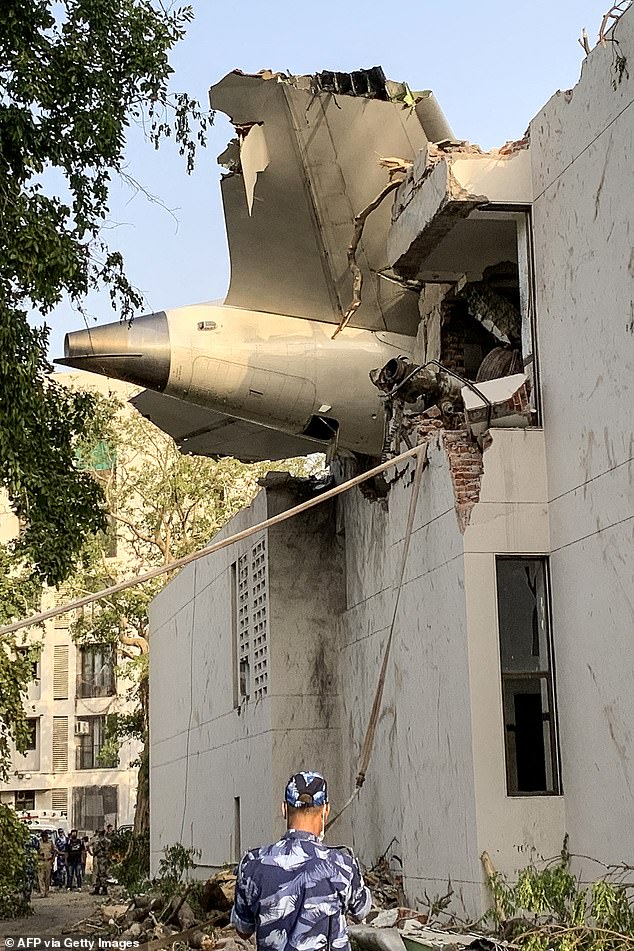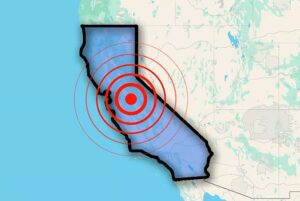
Investigators probing the deadly Air India crash that killed 260 people last month are focusing on the actions of the cockpit crew, with early assessments indicating no apparent fault with the Boeing 787 Dreamliner.
Preliminary findings suggest switches that control fuel flow to the aircraft’s twin engines were turned off shortly after takeoff, causing the jet to lose thrust, according to sources familiar with the US side of the investigation.
In aviation, the switches are used to start or shut down the engines and are typically left on during flight.
It remains unclear why they were turned off, and investigators have been left wondering whether it was deliberate, accidental or corrected too late.
According to a report in the Wall Street Journal, one potential sign that the switches were off was the deployment of the plane’s emergency power system, a ram air turbine or RAT.
Although a preliminary report has been submitted to Indian authorities, it has been reported that there is no obligation to release it to the public.
The tragedy last month claimed the lives of 169 Indian passengers on board, 53 British, seven Portuguese and a Canadian, as well as 12 crew members and left only one survivor – British national Vishwash Kumar Ramesh, 40.
At least 38 people were also killed on the ground as the doomed Boeing 787-8 Dreamliner came down in a residential area moments after takeoff.

Investigators are focusing on the actions of the cockpit crew, with early assessments indicating no apparent fault with the Boeing 787 Dreamliner

Air India has said that the flight’s captain, Sumeet Sabharwal had over 10,000 hours experience of flying wide-body or larger aircrafts

Co-pilot Clive Kunder also had over 3,400 hours of flying experience, according to Air India
Air India, the nation’s oldest airline, has been trying to revitalise its operations after several years under government control.
The airline company says Captain Sumeet Sabharwal, who was flying the plane, had more than 10,000 hours of experience on wide-body jets, while co-pilot Clive Kunder had logged over 3,400 hours.
The crash marked the first fatal incident involving a Dreamliner and was a major setback for Boeing, which is facing ongoing scrutiny over its aircraft safety standards.
The US National Transportation Safety Board is assisting with the Indian-led investigation, while the Federal Aviation Administration, Boeing and GE Aerospace are providing technical support.
Reports indicate that there have been tensions building between American and Indian officials.
One of the biggest points of contention is the delay in accessing and analysing the plane’s black boxes.
The Americans are not pleased with the slow pace at which data is being extracted from the cockpit voice and data recorders.
The US team at one point even considered pulling out of the probe before eventually deciding to carry on. The US investigators have since returned home.

Vishwashkumar Ramesh was the only passenger who survived the tragedy

The aircraft crashed into a student hostel near the airport shortly after taking off

There has been a reported tension between the Indian and US investigators
The Dreamliner, which was first delivered to Air India in 2012, has been used for many international routes.
Although officials have initially focused on the fuel control switches, they have cautioned that nothing has been ruled out yet.
Harrowing footage of the crash shows how the plane, in the air, went down in a busy area and also killing 19 people on the ground in Ahmedabad on June 12.
Sole survivor Vishwash Kumar Ramesh had been in the country on a business trip with his brother Ajaykumar, 35, before they boarded the doomed flight travelling from Ahmedabad to Gatwick on Thursday.
In what has been described as a miracle, Viswash – seated in 11A by the exit – survived, but his sibling who was sat on the other side of the aisle in seat 11J perished in the fireball explosion.
Before the discovery of the British survivor, authorities said that they believed no one had escaped the flight alive.
There were 53 British nationals on board as well as 159 Indian nationals, seven Portuguese citizens and a Canadian.
Eleven of those on board were children, including two newborns.

Ajaykumar Ramesh (left) who died in the plane crash and his brother Viswash Kumar Ramesh (right), who miraculously survived

Astonishing footage showed Vishwar walking away from the scene with some visible injuries to his face

Raxa Modha (left) was on the doomed flight so tragically died in the crash on Thursday

Akeel Nanawaba (left), 36, his wife Hannaa (right), 30, and their four-year-old daughter Sarah were flying home from a five-day family celebration when the Air India Dreamliner crashed shortly after take-off. They also died in the tragedy

Jamie Greenlaw-Meek, 45, (right) and husband Fiongal, 39, lived in London, ran a wellness and healthy lifestyle company called the Wellness Foundry, and had been in India on holiday. They also died in the ill-fated flight
The Boeing jet crashed shortly after takeoff from Ahmedabad Airport in Gujarat at around 1.40pm (0810 GMT), officials said.
Ahmedabad, the main city of India’s Gujarat state, is home to around eight million people, and the busy airport is surrounded by densely packed residential areas.
Preliminary flight tracking data from flightradar24 reveals the plane reached an altitude of just 625ft after takeoff – a height far below standard for a commercial aircraft several minutes into departure.
According to data logs recorded at 30-second intervals showed the plane remained on the ground or was taxiing slowly for over four minutes after it first registered on public trackers.
The plane took off and reached 625ft, but no further gains in altitude were recorded before the crash.
India’s Directorate General of Civil Aviation said the plane sent a mayday call moments before the tragedy unfolded.






